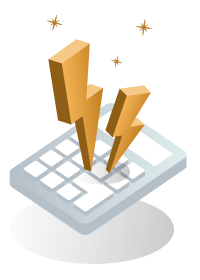What is a Standing Charge on Your Energy Bill?

In addition to your gas and electricity costs, you’ll find a standing charge on most gas and electricity bills. Read on to learn what exactly does your standing charge is and what it covers.
Standing charges explained
A standing charge is a fixed daily cost on energy bills which customers are expected to pay regardless of how much gas or electricity they use. Think of it as being similar to a phone line rental charge, only this is for your energy supply.
Both gas and electricity have their own standing charge. This standing charge covers supplier operational costs, such as the following:
- Keeping your home connected to the energy network
- Maintenance to the energy network, wires and pipes
- Carrying out meter readings
- Government initiatives and schemes aimed at helping vulnerable households and reducing CO2 emissions.
Standing charges are typicaly listed as a daily charge on your energy bill.
How is my standing charge calculated?

Since Ofgem's Retail Market Review in 2010, the energy watchdog has tried to create a fairer and more transparent market for consumers. Because they are natural monopolies, without any restrictions in place, distribution and transmission networks could charge what they wanted and suppliers would have no choice but to agree. This would then result in huge increases for customers.
Therefore, Ofgem introduced the RIIO Model, (Revenue = Incentive + Innovation + Outputs). This set a percentage that could be taken from consumer energy bills and given to the distribution and transmission networks. To make this more transparent, these costs now have to be expressed as a ‘standing charge’ in a pence-per-day format.
How much is the typical standing charge?
Do I have to pay standing charges on an empty property?The same flat daily standing charge always applies, no matter how much energy you use. Even if the property is a holiday home that is empty for part of the year, you’ll still be expected to pay a standing charge.
Standing charges can vary significantly depending on your energy supplier, tariff, method of payment and the region you live in.
How can I pay less in standing charges?
Using a monthly direct debit payment method could reduce the cost of your standing charge. By doing this, your supplier will not have to cover the cost of processing monthly card payments or chasing up unpaid bills. These savings could then be passed on to the customer through reduced standing charges.
Are there any tariffs without standing charges?
Although all energy plans must carry a standing charge, you may have noticed that some tariffs will offer a 0p standing charge. This can be viewed as either a positive or negative, depending on your personal circumstances.
Should I switch to a tariff with a 0p standing charge?
If you have a property that is uninhabited for the majority of the year, switching to a tariff with a 0p standing charge could be something to look into, as you will only pay for the energy you use.
However, as the standing charge is set at 0p, the unit rate is typically set much higher, so you should first consider this before jumping at the chance of not paying a standing charge.

